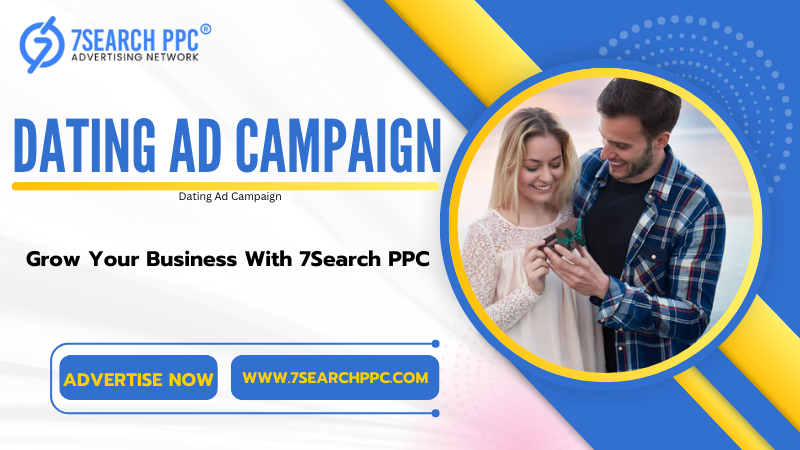Creating a winning dating ad campaign requires strategic planning, precise targeting, and a deep understanding of the audience’s needs. With the rise of dating personal ads and evolving digital platforms, businesses and matchmaking services can achieve remarkable results when they adopt effective advertising strategies. In this article, we’ll guide you through every essential step for crafting a profitable dating ad campaign using advanced tools like dating push ads, CPC ads, and more.

Advertise Now
What Makes a Dating Ad Campaign Successful?
To create a campaign that resonates, focus on these critical factors:
- Audience Research: Understanding your audience’s demographics, preferences, and behavior patterns is the foundation of any successful campaign.
- Engaging Creatives: Visuals, compelling headlines, and emotional appeals drive conversions.
- Platform Selection: Choosing the right advertising channels ensures your ads reach the intended audience effectively.
Understanding Dating Ad Campaign Goals
Set Clear Objectives for Your Dating Campaigns
Your campaign objectives will shape every element of your strategy. Whether your goal is increasing app downloads, boosting memberships, or promoting matchmaking services, clarity is key. Break down your objectives into measurable KPIs such as click-through rates (CTR), conversion rates, or cost per acquisition (CPA).
Key Components of a Dating Ad Campaign
Crafting High-Performing Dating Personal Ads
Dating personal ads are a direct and engaging way to connect with users. To maximize effectiveness:
- Use personalized language that mirrors your audience’s desires.
- Include strong calls-to-action (CTAs) like “Find Your Match Today” or “Join for Free.”
- Highlight unique selling points, such as exclusive matchmaking tools or location-based services.
Leveraging Dating Push Ads for Instant Engagement
Dating push ads are notifications sent directly to a user’s device, making them highly effective for immediate engagement. Best practices include:
- Timing: Send push ads during peak activity times, such as evenings or weekends.
- Segmentation: Tailor messages based on user activity, location, or interests.
- Creativity: Use eye-catching icons, emojis, and concise copy to grab attention.
Choosing the Right Platforms for Dating Campaigns
Social Media Advertising for Matchmaking Ads
Platforms like Facebook, Instagram, and TikTok offer excellent targeting capabilities for matchmaking ads. Leverage their advanced algorithms to:
- Target specific age groups and relationship statuses.
- Run retargeting ads for users who visited your site but didn’t convert.
- Create video ads showcasing success stories or app features.
Google Ads and CPC Campaigns for Broader Reach
Using CPC ads on Google ensures you capture high-intent users searching for dating services. Optimize your campaigns by:
- Selecting high-converting keywords such as “best dating apps” or “local matchmaking services.”
- Crafting compelling ad copy that emphasizes benefits like privacy and success rates.
- Using ad extensions to showcase reviews, pricing, or additional features.
Crafting Ad Creatives That Convert
Writing Headlines That Speak to the Heart
Your headline is the first thing users notice. Make it count by:
- Asking intriguing questions like, “Looking for Love in All the Right Places?”
- Using power words such as “exclusive,” “free,” or “guaranteed.”
- Emphasizing urgency with phrases like “Sign Up Now” or “Limited Time Offer.”
Visuals That Drive Action
Images and videos play a significant role in boosting engagement. Choose visuals that:
- Reflect your target audience’s age and style preferences.
- Evoke emotions like happiness, excitement, or trust.
- Are optimized for mobile viewing.
Optimizing Your Campaign for Maximum ROI
Tracking Metrics That Matter
Measuring performance is crucial to refining your campaigns. Focus on:
- Click-Through Rate (CTR): Indicates the effectiveness of your ad creatives.
- Cost Per Click (CPC): Helps monitor your budget efficiency.
- Conversion Rate: Measures how many users took the desired action.
A/B Testing Your Ads
Run split tests to identify what works best. Experiment with:
- Different CTAs (e.g., “Start Your Journey” vs. “Join Now”).
- Ad formats, such as carousel ads versus static images.
- Various audience segments to discover untapped opportunities.
Scaling Your Dating Ad Campaign
Retargeting for Continued Success
Users who interact with your ads but don’t convert can still be valuable. Use retargeting strategies to:
- Show ads reminding them of your services.
- Offer limited-time discounts or exclusive features.
- Share testimonials from satisfied users.
Expanding to New Markets
Once you’ve mastered a local audience, consider scaling globally. Adapt your ad creatives and messaging to resonate with diverse cultures and languages.
Conclusion
By implementing these strategies, you can design a dating ad campaign that not only attracts users but also keeps them engaged. From using dating push ads to optimizing CPC ads, the possibilities are endless when you combine creativity with data-driven insights.
Frequently Asked Questions (FAQs)
What is a dating ad campaign?
Ans: A dating ad campaign is a targeted marketing effort designed to promote dating services, apps, or matchmaking platforms. These campaigns utilize various advertising methods, such as push ads, CPC ads, and social media ads, to attract users and encourage engagement.
How do dating push ads work?
Ans: Dating push ads are notifications sent directly to a user’s mobile or desktop device. They capture attention quickly and encourage immediate actions. These ads work best when tailored to the user’s preferences, location, or recent activity.
How much budget should I allocate for a dating ad campaign?
Ans: The budget depends on your goals and platform. Start with a modest budget to test different strategies and scale up once you identify high-performing ads. Keep a close watch on metrics like CPA to ensure cost efficiency.
Can I run a dating ad campaign globally?
Ans: Yes, but you need to adapt your ads to different markets. This includes translating content, understanding cultural nuances, and targeting local demographics effectively.
